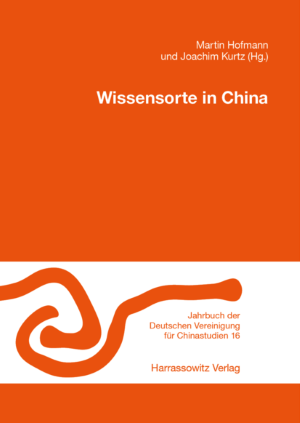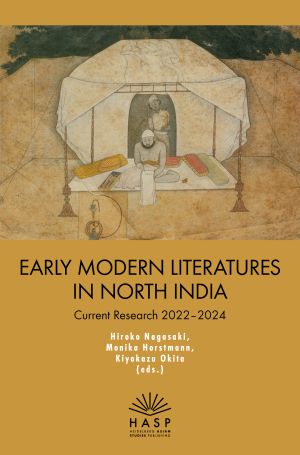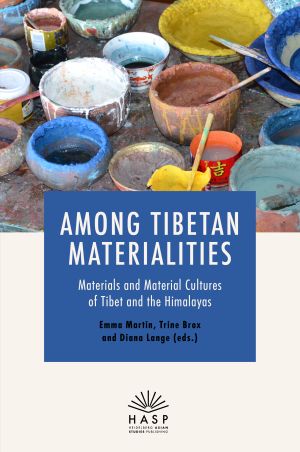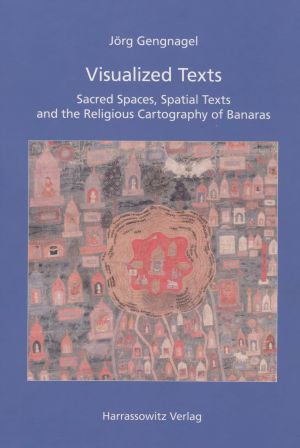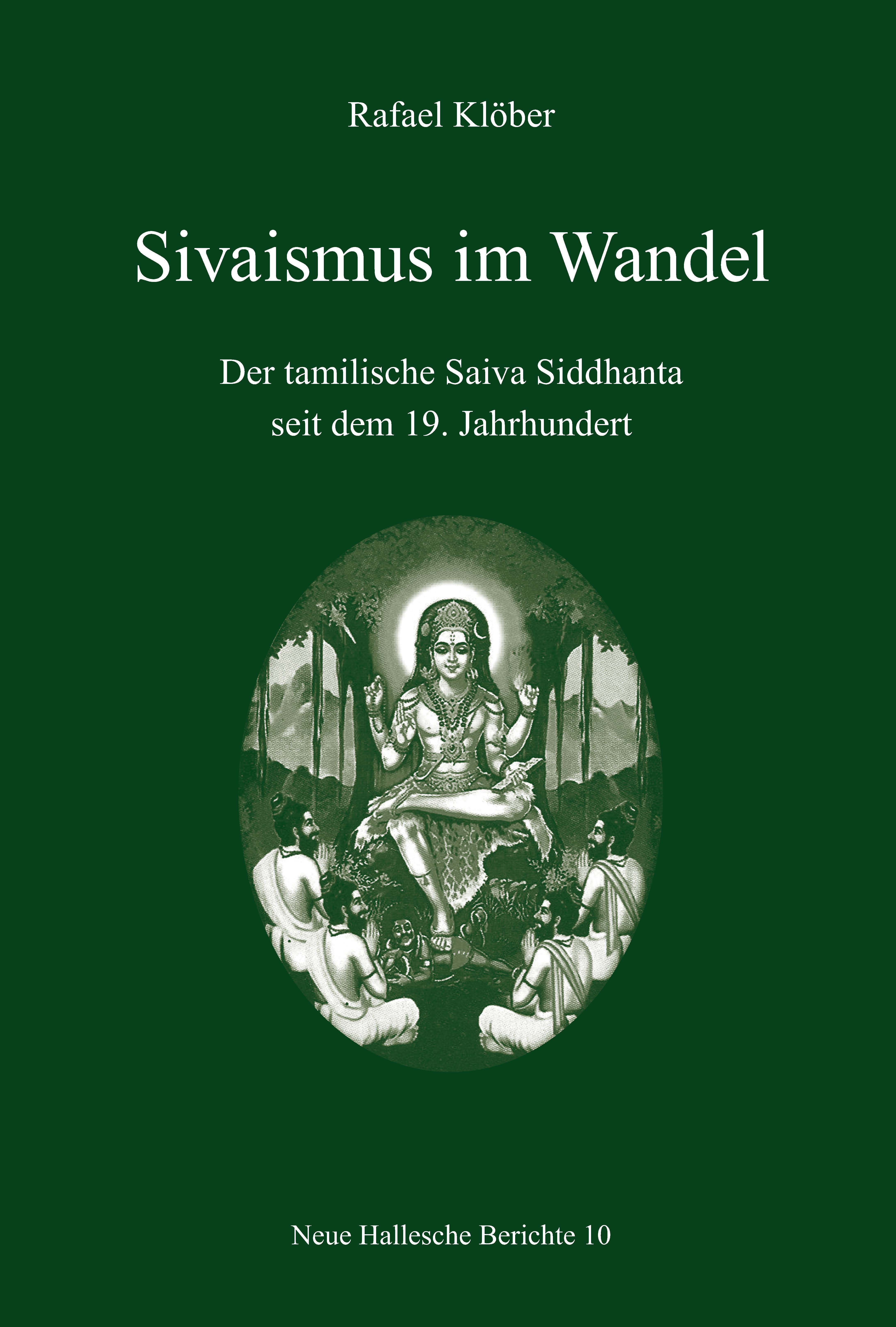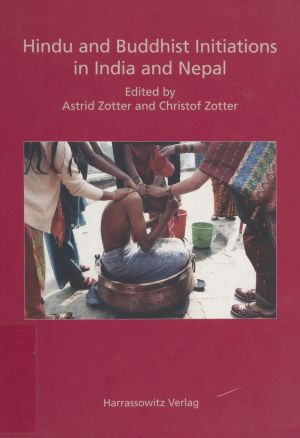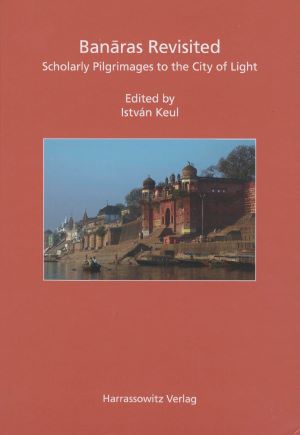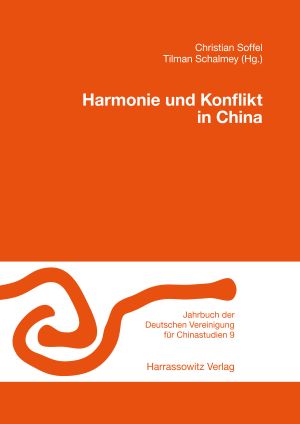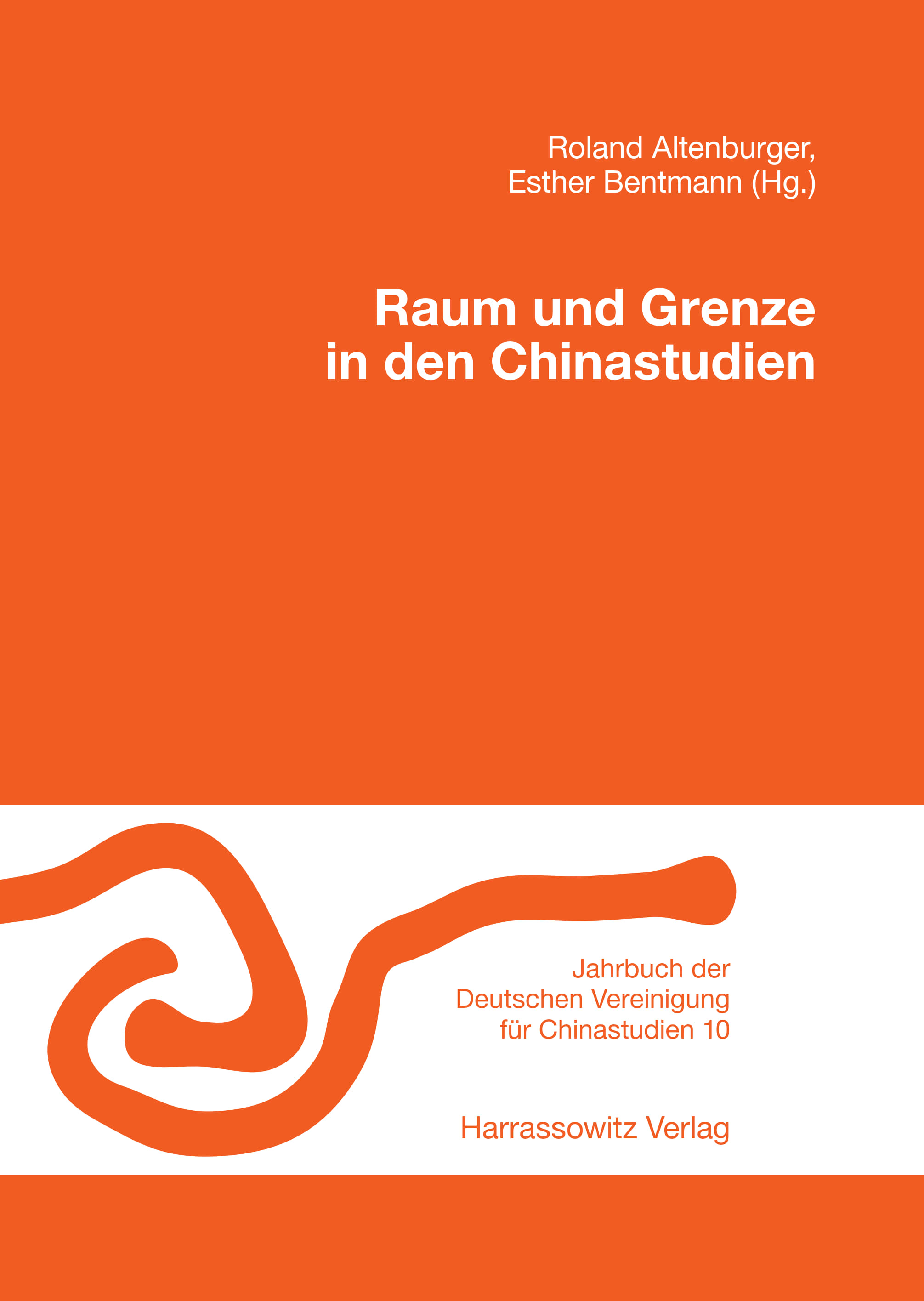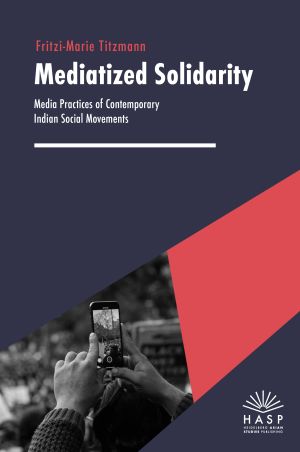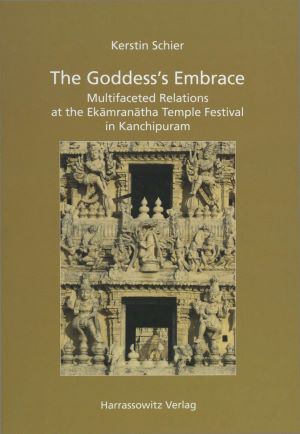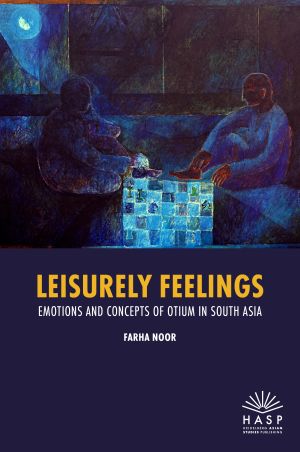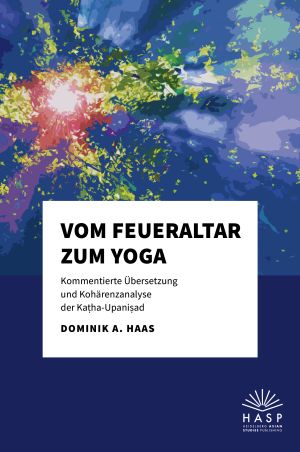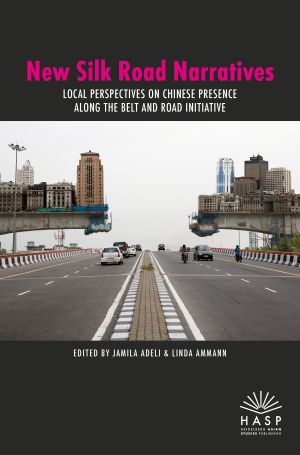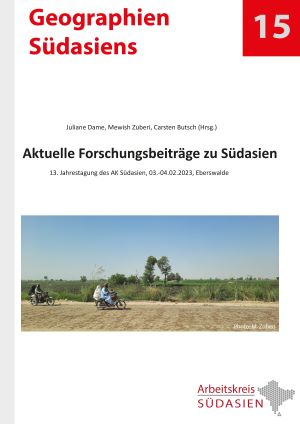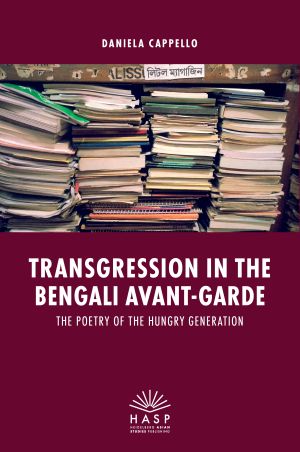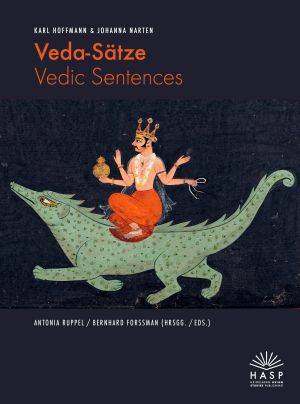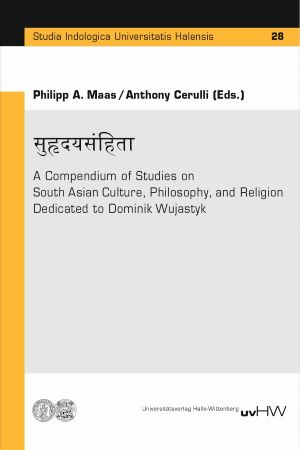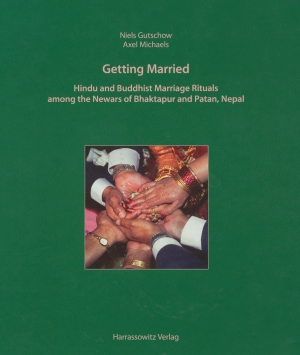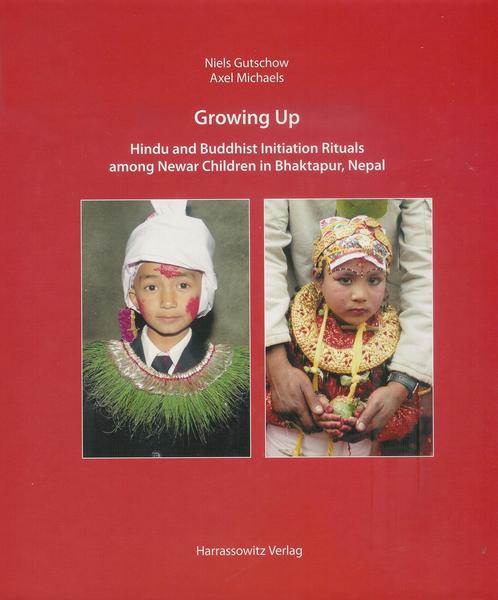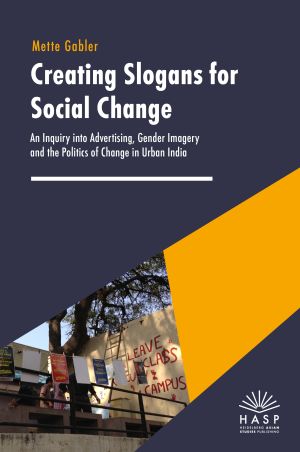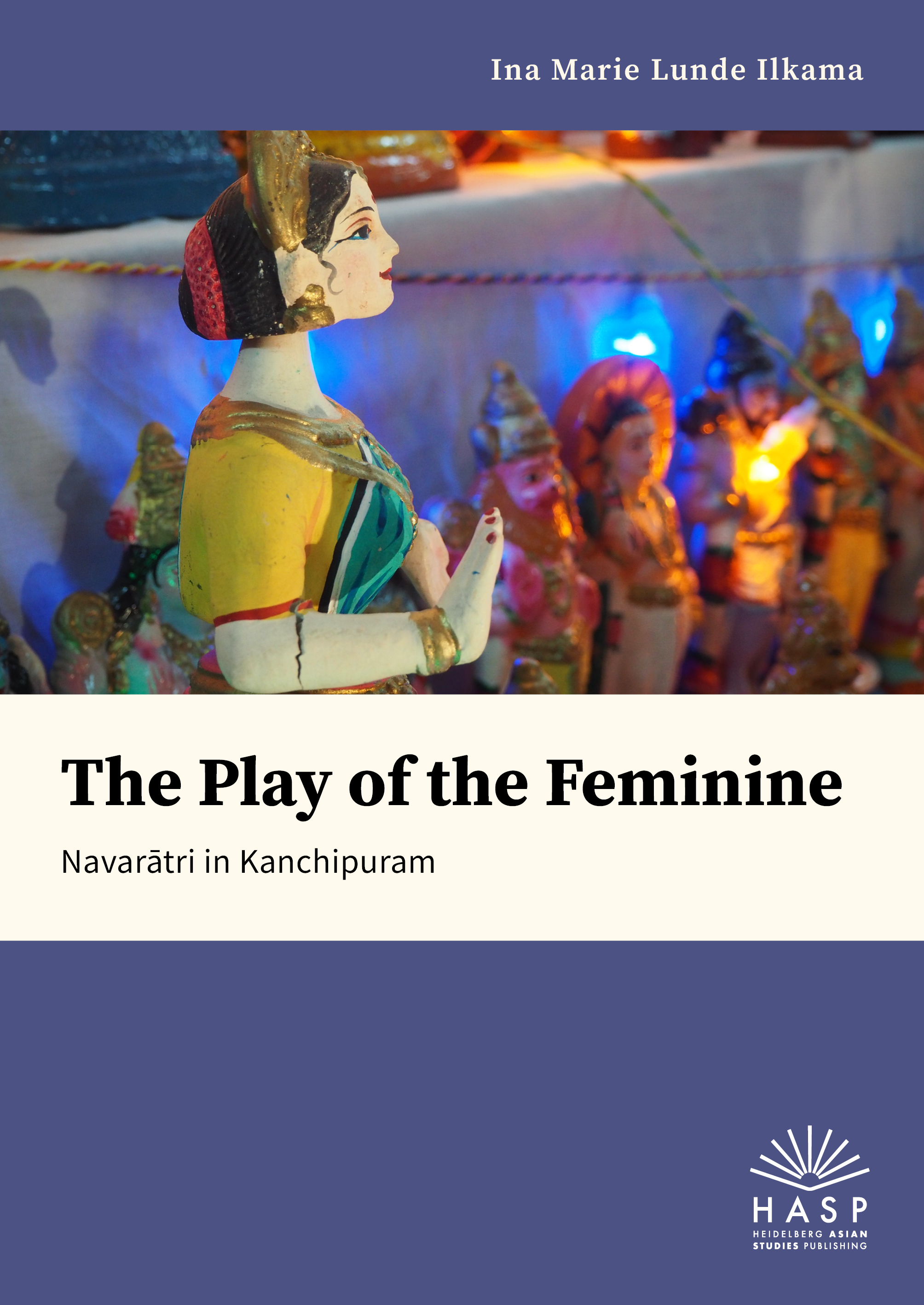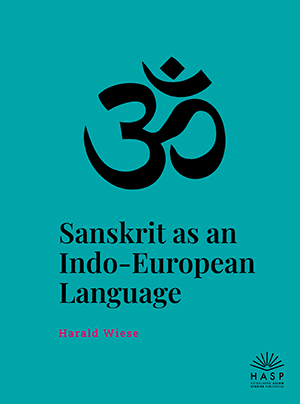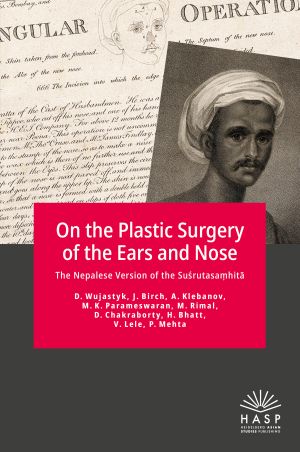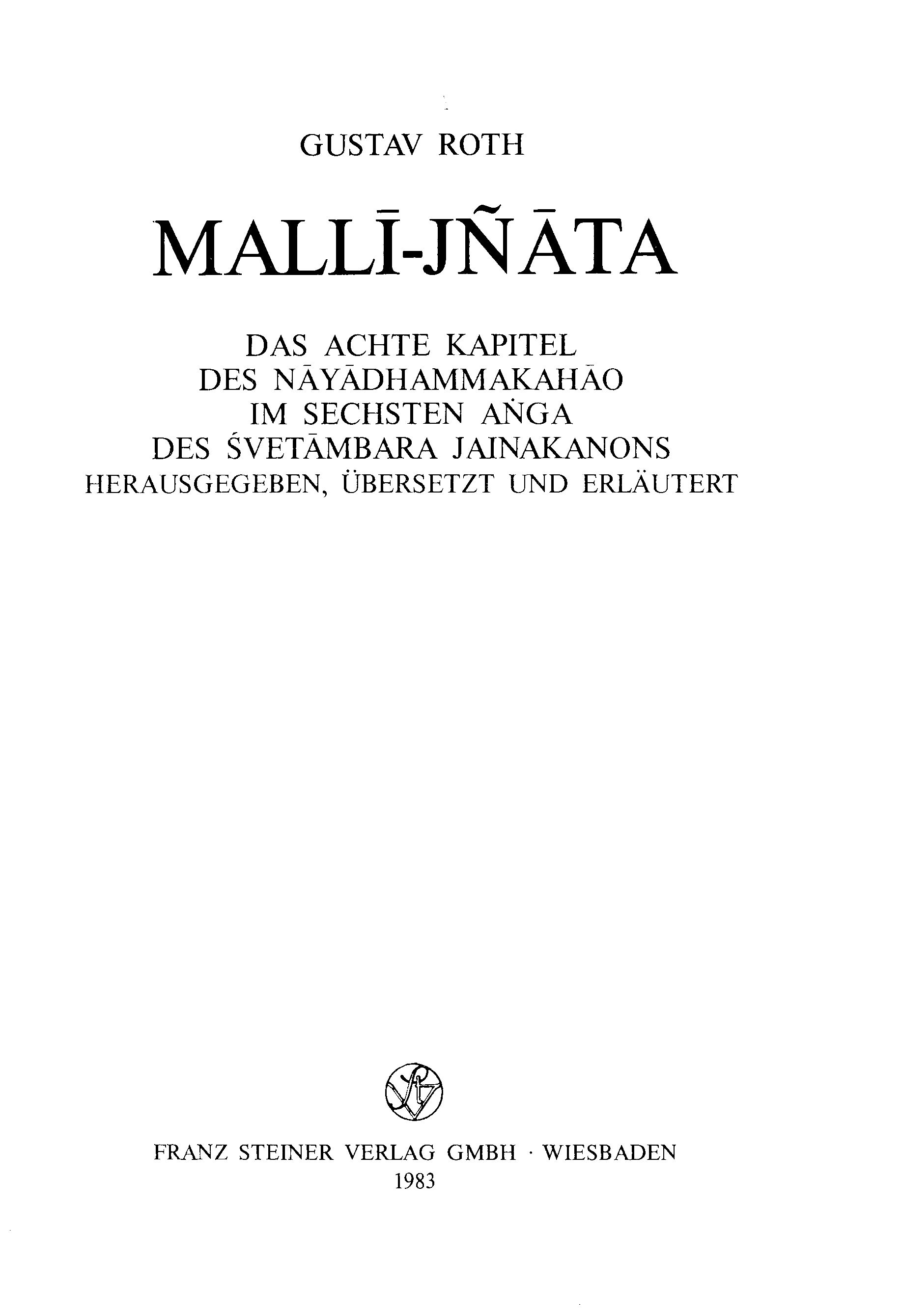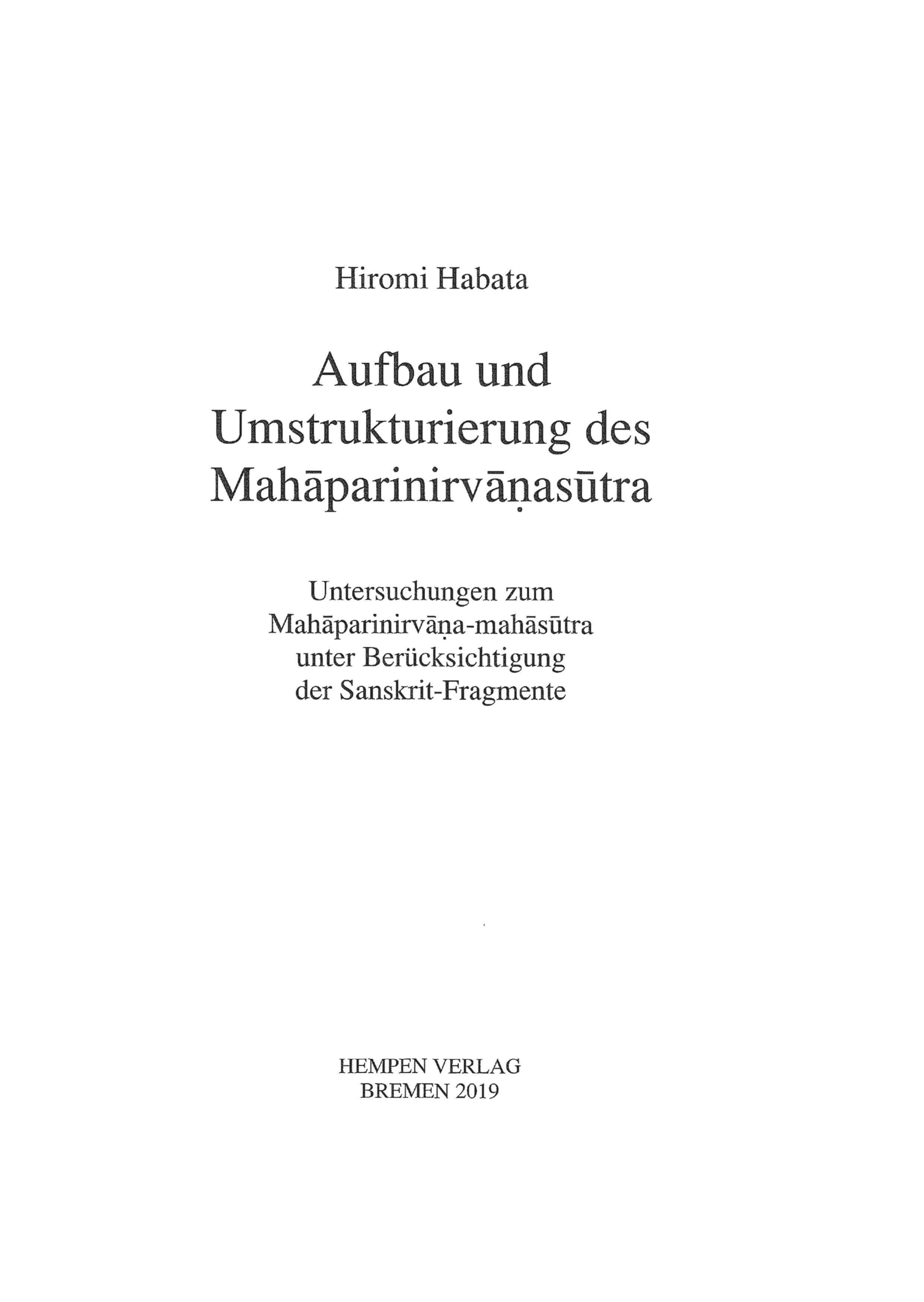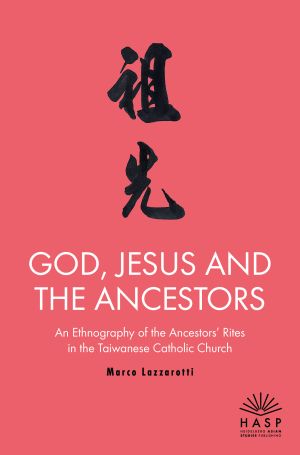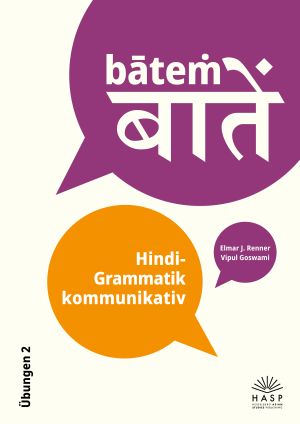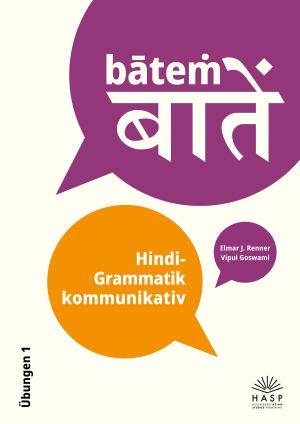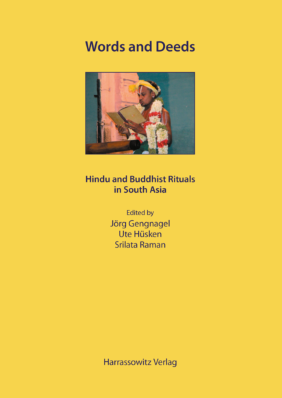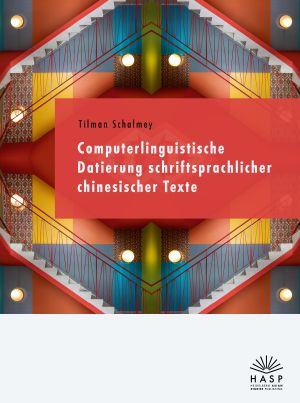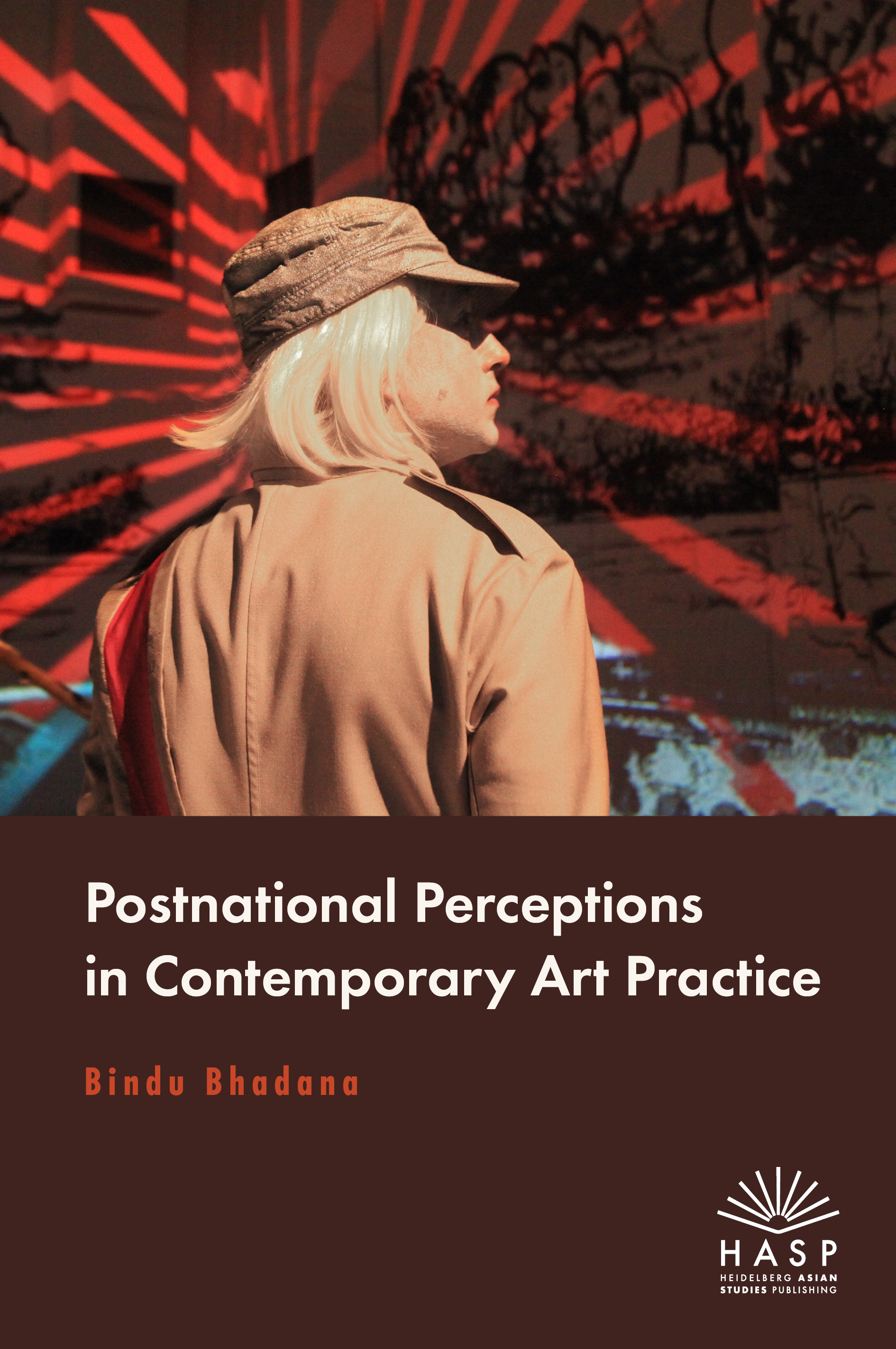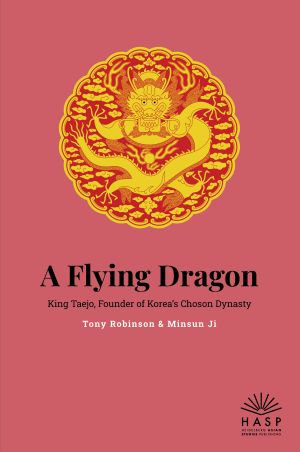Books
Krise und Risiko.: China und der Umgang mit Unwägbarkeit
In times of global pandemics, unexpected wars, and increasing social divisions, many societies are more aware of “crisis” than ever before in the 21st century. Political, social, and cultural certainties that had remained unquestioned for decades have clearly begun to falter. Not only in German-speaking places and in Europe, this is forcing a renegotiation of how to deal with imponderabilities, not least in relation to China.
The volume Krise und Risiko (Crisis and Risk) presents selected contributions to the XXXIst annual Conference of the German Association of Chinese Studies (DVCS), which was organized in November 2020 by the Institute of Asian and Oriental Studies at University of Zurich and held virtually due to the Covid19 pandemic. The eleven contributions in the volume cover a wide range of topics, from coping strategies during the coronavirus pandemic in the People's Republic of China in 2020 to disaster motifs in popular narrative literature of the Ming period to the topos of suicide as a protest used as a putative strategy for overcoming personal crises in ancient philosophical texts. They not only shed light on different periods, geographical and social spheres in China, but also open up a broad panorama of methodological approaches, written and oral sources, and analyze the related social, artistic, and religious practices and cultures of knowledge.
Ranbir Singhs Juwelenbrosche und Aigrette: Übersetzungen und Anhänge
Volume 2 provides content-based access to the text through a German translation of the metrical base text, supplemented by numerous additions from the auto-commentary. The translation is accompanied by the corresponding passages from the Persian source — likewise rendered in German translation. These are followed by numerous appendices, which gather the intertextual references, display Sāhibrām’s metrical repertoire, and visually represent his prosopopoeic poems. Also included is a lexicon listing the portions of his vocabulary not yet attested in existing lexical resources.
The edited Sanskrit text and a diplomatic transcription of the main text of the unedited chapters have been published as research data. These are available for download at: https://doi.org/10.11588/DATA/LTF9NA
Ranbir Singhs Juwelenbrosche und Aigrette: Einleitung und Edition
Volume 1 documents for the first time, through a partial edition of 19 chapters, the portion of this Sanskrit work that can be most reliably established on the basis of available manuscript witnesses. The accompanying introduction explores the historical circumstances of the transfer of the text from New Persian. By determining the method of translation and providing a comprehensive account of Sāhibrām’s translation techniques — illustrated with numerous examples and synoptic tables — it is shown how Muḥsin’s Ethics ultimately became Ranbir Singh’s turban ornament.
The edited Sanskrit text and a diplomatic transcription of the main text of the unedited chapters have been published as research data. These are available for download at: https://doi.org/10.11588/DATA/LTF9NA
Wissensorte in China
All knowledge has its place. The spaces in which knowledge is produced, stored or passed on exert a specific influence on its content and form. In the wake of the spatial turn, questions about the local conditions of knowledge have come into focus in various humanities and social science disciplines: Which places play a formative role in the collection and interpretation of knowledge? How do spatial conditions influence theories and procedures? Which site-specific forms and media are used to preserve or pass on knowledge? And what relevance does the spatial reference have for the validity of knowledge?
Wissensorte in China explores these questions in eleven case studies and an overview article. The articles cover a time period from the Han to the present day. They examine the spatial dimensions of institutions of higher education and sites of vocational training and further education. They reconstruct commercial and religious sites such as book boats and Buddhist revolving wheel sutras cabinets, but also analyze texts and social practices that can be understood as knowledge sites of their own kind. The articles thus provide fascinating insights into one of the world's richest cultures of knowledge.
The volume contains selected contributions of the XXXth annual Conference of the German Association for Chinese Studies (DVCS), which took place in November 2019 at the Center for Asian and Transcultural Studies (CATS) at Ruprecht-Karls-Universität Heidelberg.
Early Modern Literatures in North India: Current Research 2022–2024
The volume represents the Proceedings of the 14th International Conference on Early Modern Literatures of North India, Osaka University, 15–19 July 2022. It highlights the conference series' history, the influential 1970s manuscript collection foundational to Sant tradition studies, and multilinguality in Jain traditions. It further explores the role of women in court literature, Vedāntic interpretations, the symbolism of paintings in literature, Sūrdās and Gurmukhi cultural outputs, emphasizing the cosmopolitan nature of vernacular literature.
Kleines Gatha-Lesebuch: Edited from the literary estate by Bernhard Forssman, with the collaboration of Jürgen Habisreitinger. With a contribution by Almut Hintze.
This book contains pieces from the Gathas, poetic texts assumed to have been authored by Zarathustra, the founder of the Parsi religion. The language of these poems is an early stage of Avestan, a sister language of Old Persian from ancient Iran. In terms of their language and content, the interpretation of the Gathas poses numerous difficulties. The important Avesta researcher Karl Hoffmann (1915–1996) compiled a collection of relatively simple texts, together with his own translations, to use in his teaching. This collection is now being published from his literary estate, supplemented by various additions such as a contribution by Prof. Almut Hintze (London) on the Gathas as well as a complete vocabulary.
Among Tibetan Materialities: Materials and Material Cultures of Tibet and the Himalayas
Among Tibetan Materialities makes an intervention into Tibetan studies by critically engaging with material culture. It opens up new sources, methodologies and frameworks for studying, thinking and writing about material culture, materials and materiality in Tibet and the Himalayas. It highlights novel ways that Tibetan and Himalayan worlds can be made relevant beyond their local contexts. Spanning historical and contemporary contexts this collection of ongoing research disrupts current approaches to Tibetan and Himalayan materiality by considering socially constructed materiality and the materials constituting things, from their conception and production to their end of life and afterlife.
Routes, Patterns, Ideologies: Navigating Sacred Sites in India
Hindu sacred geographies are shaped by interwoven webs of myth, ritual, and pilgrimage. Routes, Patterns, Ideologies: Navigating Sacred Sites in India brings together essays that offer in-depth explorations of Hindu sacred spaces, focusing on the relationships between sites as a crucial dimension of their theological and social significance. Drawing on textual analysis, visual studies, and ethnographic insights, the contributors to this volume illuminate the patterns and mechanisms that link sacred sites into dynamic networks, demonstrating how sacrality is continually negotiated through evolving cultural, political, and theological landscapes.
Visualized Texts: Sacred Spaces, Spatial Texts and the Religious Cartography of Banaras
The study of the history of South Asian cartography has long been interpreted based on Western cartographic traditions. Maps of the South Asian subcontinent were assumed to be produced by foreigners – not by South Asians themselves. Maps actually produced in South Asia were neglected as a category in their own right. The present study focuses on the religious cartography of the north Indian pilgrimage center Banaras (Varanasi). It deals with visualizations of the sacred topography of Banaras as represented by various kinds of “maps”, including painted pictorial maps, printed pilgrimage maps and simple spatial charts. The introduction to the volume is followed by a study of the textual background of the studied cartographic material. It then presents a nineteenth century debate on the Pancakroshi procession as a case study on the interrelation of maps, texts and pilgrimage practice. The following section presents the first detailed study of four pilgrimage maps produced during the 18th and 19th century. The volume concludes with extensive indices that provide access to the numerous names of gods, places and temples contained in the studied maps, texts and processions.
Sūryās Hochzeit: Kohärenz von Text und Ritual im Ṛgveda (10.85)
The Ṛgveda is a collection of over a thousand Sanskrit hymns dating from around 1000 BCE. The style of the hymns is typically highly poetic. However, the Sūryāsūkta (Ṛgveda 10.85) included in this collection is considered a loosely structured compilation of wedding-related stanzas.
In this book, Anne Keßler-Persaud questions this fundamental assumption about the Sūryāsūkta’s degree of textuality. With the help of text-linguistic and hermeneutic methods, she proves a strong coherence of this text. The Sūryāsūkta displays a sophisticated metrical and rhetorical structure and poetically communicates an equally coherent sequence of the wedding ritual of the goddess Sūryā.
Here and Elsewhere: Transposed Deities, Substitute Pilgrimages and Geographic Imagination in North India
Here and Elsewhere offers a grounded study of crucial modes of sanctification and imagination of Hindu geographies: spatial transposition and substitute pilgrimage. It looks at the local representatives of the pan-Indian jyotirliṅgas in Varanasi (Banaras) and the urban pilgrimage connected to them by combining interpretative analysis of glorifications (māhātmyas) with in-depth ethnographic research. This enables the author closely to observe the strategies that a variety of social actors employ to knit together and reproduce connections between places of the here and the elsewhere, and to locate deities and themselves within multiple spatial dimensions, both lived and imagined.
Aktuelle Forschungsbeiträge zu Südasien: 14. Jahrestagung des AK Südasien, 02.-03.02.2024, Augsburg
Extended Abstracts of the 14th Annual Meeting of the AK Südasien, 02.-03.02.2024, Augsburg
Sivaismus im Wandel: Der tamilische Saiva Siddhanta seit dem 19. Jahrhundert
The starting point of this study on the philosophical tradition of Saiva Siddhanta is an ethnographic-philological analysis of its Tamil manifestations and the teachings of its most influential exponents at the beginning of the 21st century. The study is centered around the most significant monastic-orthodox institution of Tamil Saiva Siddhanta, the Thiruvavaduthurai Adhinam. Since opening up to laypeople in the 1990s, this institution has been disseminating philosophical teachings through its own popular organization, significantly shaping South Indian debates.
This study traces the contemporary understanding of Tamil Saiva philosophy historically back to the mid-19th century. It becomes evident that around 1900, the conception of Saiva Siddhanta underwent profound transformations, leading to influential terminologies that persist to this day. The study thus demonstrates that Tamil Saiva Siddhanta, with its philosophical foundations and literary canon, is the result of a history of global entanglements—shaped collectively by Tamil scholars, Saiva reformers, Christian missionaries, and European Orientalists.
Hindu and Buddhist Initiations in India and Nepal
Broadly speaking, two sets of rituals are relevant to a discussion of initiations in Hindu and Buddhist traditions: initiatory rituals as part of the life-cycle which are observed in many social groups and are compulsory depending on gender or age, and those, more optional in character, that allow admittance to a certain religious group or practice. The contributors to this volume are from different academic disciplines and treat examples of both kinds of rituals in various religious settings. Of special interest in this collection of essays are interrelationships among initiations and their relations to other kinds of rituals. The papers are devoted to the study of minute details and point to the dynamics of initiations. The transfer of ritual elements accompanied by readjustments to new contexts as the modification of procedures or the reassignment of meanings is one of the recurring traits. Other aspects addressed by the authors include the relation of script (ritual handbooks) to performance or various forces of change (e.g. the economics of ritual, gender-related variations, modernization and democratization).
Banāras Revisited: Scholarly Pilgrimages to the City of Light
In Banaras Revisited, scholars from various disciplines talk about their research in a city that has been described as a veritable microcosm of India: multifaceted, complex, vibrant, and full of contradictions. The themes range from the sensory aesthetics of everyday life to the history of the Marathas in Banaras; from Harishchandra, the father of modern Hindi, to the tribals of Nagwa; from the architecture of the ghats to the works of the Austrian writers Zweig and Winkler; from informative relationships with research assistants to the mediatization of goddesses; from reflections on public education to a contemporary literary chronicler of Assi; from colonial ghosts in the 1950s to present-day Western travelers. In addition to its thematic diversity, the volume benefits from another strong asset: the voices of its contributors, clearly audible in reflexive passages and personal vignettes that make the essays a useful reading also for undergraduates considering fieldwork in Banaras or elsewhere.
Harmonie und Konflikt in China
In the discourse on China, a country that many observers believe to be characterised by harmony, the aspect of conflict is often underexposed. Yet both social tensions and intellectual controversies have always been omnipresent in Chinese culture. They have proved to be a decisive force for cultural change and social development, both in ancient and modern times. Conflict and harmony do not necessarily stand in irreconcilable opposition; they often form a symbiotic relationship, evident in the interplay between freedom and oppression.
Many challenges in China's intellectual and social life can be traced and analysed within this tension between conflict and harmony. The authors of the 15 papers in this volume examine these issues from the perspective of various China-related disciplines, including philosophy, literature, sociology, political science, law and history.
Raum und Grenze in den Chinastudien
“Raum und Grenze” (Space and Border) was the theme of the XXIV Annual Conference of the German Association for Chinese Studies, held at the Julius-Maximilians-Universität Würzburg in November 2013. Participants were invited to explore the epistemic potential of a spatial turn in China-related research. In addition to contributions with the conventional approach of space and border as territoriality, studies on space as a social construction were also presented. Practices of spatial constitution, development and control as well as acts of inclusion and exclusion played an important role.
Mediatised Solidarity: Media Practices of Contemporary Indian Social Movements
In an era marked by rapid media diffusion and globalised social movements, Mediatised Solidarity delves into the evolving dimensions of solidarity within Indian social and protest movements. Focused on the period from 2014 to the present, it analyses the interplay between media practices, including social media, and solidarity expressions. Through three case studies – Shaheen Bagh, the Indian Farmers’ Protest, and contemporary youth climate activism – the book explores how media and visual art shape and are shaped by solidarity and the extent to which shared memories and cultural heritage are used to stage social cohesion.
The Goddess’s Embrace: Multifaceted Relations at the Ekāmranātha Temple Festival in Kanchipuram
The study by Kerstin Schier examines the big annual festival (mahotsava) at the Ekāmranātha temple in the South Indian town Kanchipuram, which – among other things – dramatises the divine marriage between god Śiva (as Ekāmranātha) and the goddess, generally considered to be Kāmākṣī.
In the course of the festival’s rituals gods and goddesses, temples, and religious traditions relate to each other in many ways. These complex and multifaceted relations are studied by taking into account different types of historical and contemporary sources, and by combining textual analysis with the observation and study of ritual performances, interviews, and oral narratives.
The book provides a detailed description and analysis of the divine marriage’s contemporary ritual practice and its associated myth in Sanskrit and Tamil texts. It also takes into consideration the different views and interpretations of members of local communities, temple priests, donors, and other participants, which leads to a multiplicity of perspectives on the festival.
Leisurely Feelings: Emotions and Concepts of Otium in South Asia
This book traces a conceptual history of literature, leisure and emotions in modern South Asia. Reading colonial capitalism as entwined with the ‘myth of the lazy native’, it focuses on vernacular literary contestations in Urdu and Bengali. It foregrounds otium, leisure and idleness as entangled with emotions and temporalities. The book approaches literary spheres through the lenses of emotions, the self, and the community. Literary discourses of otium are analysed in stylistic innovations, negotiations of colonial modernity and postcolonial uncertainties. Highlighting key literary-conceptual expressions, discussions, and processes, the author explores nostalgia, melancholy, topophilia and haunting as emotions deeply attached to South Asian literary cultures while also resonating with concepts of otium across global modernity.
Vom Feueraltar zum Yoga: Kommentierte Übersetzung und Kohärenzanalyse der Kaṭha-Upaniṣad
The Kaṭha-Upaniṣad is a Sanskrit text composed about 2000 years ago dealing with the nature of human beings after death. As one of the earliest sources that teach a salvific method designated as yoga, the Kaṭha-Upaniṣad has gained renown outside of South Asia. However, due to its textual heterogeneity, it has often been said to be incoherent.
In this study, Dominik A. Haas offers a new annotated German translation of the text and analysis using text-linguistic methods. He argues that, from the beginning, the Kaṭha-Upaniṣad was conceived as a compilation intended to combine new contemplative and yogic teachings with the ritual mysticism of the famous Vedic fire altar.
New Silk Road Narratives: Local Perspectives on Chinese Presence along the Belt and Road Initiative
It is not only goods, financial capital or technologies that are being traded, negotiated and circulated along the China-led Belt and Road Initiative but also values, emotions and cultural practices. The latter are often decisive when imagining and establishing a transregional infrastructure of the scale of the BRI. This book explores connections and disconnections along the New Silk Roads through narratives and their cultural configurations. Focusing on China-Africa-relations, the authors of this book investigate the role of narratives and various forms of cultural configurations to understand how processes of transregionalization shape local patterns of thought, perception and practice.
Aktuelle Forschungsbeiträge zu Südasien: 13. Jahrestagung des AK Südasien, 03.-04.02.2023, Eberswalde
Extended Abstracts of the 13th Annual Meeting of the AK Südasien, 03.-04.02.2023, Eberswalde
Transgression in the Bengali Avant-garde: The Poetry of the Hungry Generation
Transgression in the Bengali Avant-Garde wants to introduce the Hungry Generation movement to a global audience through its poetry, manifestoes and other literary materials. Emerged from the cities of Patna and Calcutta in the early 1960s, the Hungry Generation gained international attention after the poets' arrest on charges of obscenity in 1964. Fiercely provoking the literary establishment, these Bengali bohemians used poetry and literature as means of cultural radicalism, tackling subjects like sexuality, perversion, alcohol and drug consumption, masturbation, and hyper-masculinity to challenge bourgeois morality and respectability.
The book sheds light on a variety of Hungryalist sources and explores the literature of the Hungry Generation through the filter of 'transgression', showing how this concept unfolded in the language, aesthetics and culture behind this Bengali avant-garde movement. Furthermore, the book will delve into the poetry of some iconic representatives of the Hungry Generation, critically reading their oeuvre in the context of changing models of sexuality, consumption, and modernization in post-colonial India.
Veda-Sätze – Vedic Sentences
In den altindischen Veden findet man Sätze mit sehr verschiedenen Inhalten, darunter religiöse Aussagen ("Varuṇa ist wahrhaftig der Götter König"), Lebensweisheiten ("Das Denken ist schneller als die Rede") oder auch banale Beobachtungen ("Gattin und Gatte waschen einander den Rücken"). Die bekannten Erlanger Indogermanisten und Indologen Karl Hoffmann (1915-1996) und Johanna Narten (1930-2019) haben bei ihrer jahrzehntelangen Arbeit an den Veda-Texten solche Sätze in der Originalsprache gesammelt. Diese Sammlung von 863 Kurztexten wurde von Antonia Ruppel und Bernhard Forssman zweisprachig (Englisch und Deutsch) mit Übersetzungen und einem vollständigen Vokabular versehen und wird hier erstmals veröffentlicht.
The ancient Indian Vedas contain sentences of rather varied content, including religious statements ("Varuṇa truly is the king of the gods"), words of wisdom ("Thought is quicker than speech") or even banal observations ("Wife and husband wash each other's back"). The well-known Erlangen Indo-Europeanists and Indologists Karl Hoffmann (1915-1996) and Johanna Narten (1930-2019) collected such sentences in the original language during their decades of work on the Vedas. Antonia Ruppel and Bernhard Forssman have furnished this collection of 863 short texts with translations and a complete vocabulary in two languages (English and German) and are publishing it here for the first time.
Reimagining Housing, Rethinking the Role of Architects in India
This book explores the self-perception of critical architects in post-independent and contemporary India. It takes particular interest in the role of documentary films and other media forms used by architects to intervene in debates on affordable housing and to share their alternative visions on spatial design and sustainable architecture. As a heterogeneous and highly mobile group of social actors, architects and designers develop and implement viable solutions at the intersection of extremely complex challenges and specific local contexts. The book argues that the interconnections in their design thinking and work can best be understood through the conceptual lens of critical regionalism.
Reviews
Sreya Sen in Doing Sociology (2024)
Suhṛdayasaṃhitā: A Compendium of Studies on South Asian Culture, Philosophy, and Religion. Dedicated to Dominik Wujastyk
The Suhṛdayasaṃhitā is an edited volume dedicated to Dominik Wujastyk that brings together thirteen studies on South Asian intellectual and cultural history from the beginning of the common era to the present day. The multi-disciplinarity and vitality of the academic fields of Indology and South Asian Studies are on full display from chapter to chapter, as leading scholars ask new questions and propose new methods to explore critical topics in their respective fields, including the relationship of the Gāndhāri and Sanskrit languages, bird divination in Indian and cross-cultural contexts, the world view and ethics of early Ayurveda, line drawings in alchemical Sanskrit manuscripts, cannabis in traditional alchemy (Rasaśāstra), deontic logic and terminological problems in Mīmāṃsā and Dharmaśāstra, the identification of an obscure Yoga work referenced in the commentarial literature of the Mahābhārata, psychological transformation and spiritual liberation in Pātañjala Yoga and Buddhism, Sanskrit editorial techniques and the history of printing, the human genome project and the Mahābhārata’s text genealogy, and, finally, the academic pedagogy of contemporary medical anthropology. The time-tested method of analyzing primary sources in Sanskrit and Middle-Indo-Arian languages within their culture-specific historical contexts is fertilized by neuroscience, psychology, evolutionary biology, and anthropology.
In its thematic and methodological diversity, the festschrift, which concludes with a list of Dominik Wujastyk’s works and three indexes, mirrors the broad range of academic interests and expertise of the scholar it is dedicated to.
Getting Married: Hindu and Buddhist Marriage Rituals Among the Newars of Bhaktapur and Patan, Nepal
With contributions by Manik Bajracharya, Christiane Brosius, and Tessa Pariyar
Getting Married is the third and final volume on Hindu and Buddhist life-cycle rituals among the Newars of the ancient city of Bhaktapur in Nepal. It combines extensive fieldwork and the edition and translation of relevant ritual handbooks. While Handling Death, the first volume, focussed on the dynamics of death and ancestor rituals, and Growing Up, the second volume, focussed on the rituals of childhood, adolescence and youth (especially the male and female initiation rituals), the present volume deals with a number of rituals related to marriage.
After an introductory overview of studies on marriage rituals in Nepal the authors give some basic marriage rules of Hindu and Buddhist Newars, the social topography and hierarchy, the families of the marriage partners as well as the problems of endogamy and exogamy in Bhaktapur. They present a detailed description of Hindu and Buddhist marriage rituals among Newars (which are partly documented on the DVD included in this book) and come to relevant conclusions regarding life-cycle rituals in general and the place marriage rituals occupy in Newar society and Hinduism. Furthermore the texts used by Brahmin and Buddhist priests during these rituals are edited and translated and complemented by comprehensive Appendices including a list of elements of Newar rituals and mantras as well as a mantra and general index to all three volumes. The richly illustrated books have been highly appreciated by the scholarly community as a unique attempt to provide a comprehensive ethno-indological study of all major life-cycle rituals of a certain Hindu and Buddhist community.
The film, which was originally published on a DVD accompanying the book, is archived in the heidICON multimedia database and can be viewed via the following link:
Getting Married
Growing Up: Hindu and Buddhist Initiation Rituals among Newar Children in Bhaktapur, Nepal
The authors – an architectural historian (Niels Gutschow) and an indologist (Axel Michaels) – are presenting the second part of a trilogy of studies of life-cycle rituals in Nepal, carried out under the auspices of the Collaborative Research Centre “Dynamics of Ritual”. The initiation of boys and girls of both Hindus and Buddhists of the ethnic community of Newars in the Kathmandu Valley are documented. The first part of the book presents elements of Newar rituals, the spatial background of Bhaktapur and the hierarchy of ritual specialists – illustrated by 21 maps. The second part documents with detailed descriptions the. rst feeding of solid food, birthday rituals, and pre-puberty rituals like the first shaving of the hair, the boy’s initiation with the loincloth (in Buddhist and Hindu contexts), the girl’s marriage with the bel fruit and the girl’s seclusion. One girl’s marriage (Ihi) and three boy’s initiations (Kaytapuja) are documented on a DVD. The third part presents the textual tradition: local handbooks and manuals used by the Brahmin priest to guide the rituals. Two of these texts are edited and translated to demonstrate the function of such texts in a variety of contexts.
The films, which were originally published on a DVD accompanying the book, are archived in the heidICON multimedia database and can be viewed via the following links:
1. Bel fruit and loincloth - initiations of boys and girls in Bhaktapur, Nepal
2. Bel-Frucht und Lendentuch - Initiationen von Mädchen und Jungen in Bhaktapur, Nepal
Jaina Temple Architecture in India: The Development of a Distinct Language in Space and Ritual
Jaina Temple Architecture in India is the first comprehensive study of the development and uniqueness of Jaina sacred structures. The monograph analyses temples in the whole of India and outlines clear continuities by covering the period from the early centuries BCE till the present day. It identifies a distinct Jaina approach to the shaping of ritual space, which involves often complex spatial layouts on various superimposed vertical levels as well as conglomerates of interconnected sanctums and building elements on the horizontal plane. These accommodate a multitude of venerated objects and mirror specific Jaina patterns of worship as well as Jaina mythological and cosmological concepts.
Creating Slogans for Social Change: An Inquiry into Advertising, Gender Imagery, and the Politics of Change in Urban India
What role media content plays in processes of change is an ongoing and multi-layered discussion. Therein, advertising and gender have an extraordinary position. In the context of advertising production in urban India, this book deals with the understanding of social change in the early 2010s. Through an inquiry of the production of advertising created for commercial and/or social purposes, the perceptions of advertising producers are highlighted. The analysis presents the realities of the producers as well as debates surrounding the creation processes. Thereby, the complexities and intertwining of advertising are uncovered, while dynamics of gender, media, and change are discussed.
The Play of the Feminine: Navarātri in Kanchipuram
In Tamil Nadu, the nine-night autumnal Navarātri festival can be viewed as a celebration of feminine powers in association with the goddess. This book explores Navarātri as it is celebrated in the South Indian temple town of Kanchipuram. It investigates the local mythologies of the goddess, two temple celebrations, and the domestic ritual practice known as kolu (doll displays). The author highlights three intersecting themes: namely the play of the goddess in myth and ritual, the religious agency and images of women and the divine feminine, and notions of playfulness in Navarātri rituals; as articulated in creativity, aesthetics, competition, and dramatic expressions.
Reviews
Ina Marie Lunde Ilkama in conversation with Raj Balkaran on New Books Network (2024)
Sanskrit as an Indo-European Language
Students of Sanskrit can choose among several good textbooks. Whichever they may choose, learning Sanskrit is a daunting task. This book is not an alternative textbook for learning Sanskrit. Instead, it is to accompany these textbooks and written in the hope to make Sanskrit learning easier by explaining words and grammatical forms from an Indo-European point of view. Consider, for example Old Indian ad which means “to eat”, but is also historically related to both English (abbreviated by E) eat and New High German (NHG) essen. There was an Indo-European (IE) root ed that branched out into all these words over some millennia. Even E tooth and NHG Zahn stem from IE ed.
Handling Death: The Dynamics of Death and Ancestor Rituals Among the Newars of Bhaktapur, Nepal
In a rare combination of competence, an architectural historian (Niels Gutschow) and an indologist (Axel Michaels) have documented death rituals of the ethnic community of Newars in the Kathmandu Valley, Nepal. The first part of the book focusses to a specific setting, the ancient city of Bhaktapur and its calendric rituals of death and renewal. An introduction to the urban fabric with its cremation places, routes of death processions, places of spirits and ancestor deities is followed by a presentation of specialists involved in the death and ancestor rituals – illustrated by 28 maps. The second part presents a detailed description of the union of the deceased with his forefathers, a ritual which is also documented on a DVD. In addition, local handbooks and manuals used by the Brahmin priest during this ritual are edited and translated. This ethno-indological method of combination of textual and contextual approaches aims at understanding both the agency in rituals and the function of the text in contexts. Formalized rituals turn out to be by no means strict, stereotypical and unchangeable. The uniqueness of the actors, places and time has prompted the authors to name places and actors and to date time. The study of death rituals represents the first part of a trilogy of studies of life-cycle rituals in Nepal, carried out under the auspices of the Collaborative Research Centre “Dynamics of Ritual” (Sonderforschungsbereich 619: Ritualdynamik).
The ritual was documented by Christian Bau with a video camera and is included as a film on the DVD.
The films, which were originally published on a DVD accompanying the book, are archived in the heidICON multimedia database and can be viewed via the following links:
- Handling death – Latyā – a death ritual of the Newars in Bhaktapur, Nepal
- Den Tod in die Hand nehmen – Latyā - ein Totenritual der Newars in Bhaktapur, Nepal
Exchange, gifting, and sacrificing: Premodern Indian perspectives
In both the Vedic and the classical periods, a special elite class of people existed that were called Brahmins. In a rough manner, one might say that their material wellbeing depended on dakṣiṇā in the Vedic period and on dāna in the classical one.
Broadening the perspective beyond dakṣiṇā and dāna, this book is on all sorts of giving in the context of pre-modern India, using Vedic, Sanskrit, Buddhist and, to a much lesser extent, Roman and Christian sources. The Brahmanical theory of the gift (i.e., the theory of dutiful gifting, dharmadāna) is a major focus of, and has provided a major motivation for, this study.
On the Plastic Surgery of the Ears and Nose: The Nepalese Recension of the Suśrutasaṃhitā
A thousand-year-old Ayurvedic manuscript containing the Compendium of Suśruta was announced to the scholarly world in 2007. The Nepalese manuscript, since adopted by UNESCO as part of the Memory of the World, reveals the state of classical Indian medicine in the ninth century. It enables us to study the changes in this medical classic that have taken place from the ninth to the nineteenth century, when printed texts began to dominate the dissemination of the work. The present monograph describes the research project focussed on this manuscript and offers an edition, study and translation of the historically important chapter about the plastic surgery on the nose and ears.
Mallī-Jñāta: Das achte Kapitel des Nāyādhammakahāo im sechsten Aṅga des Śvetāmbara Jainakanons, herausgegeben, übersetzt und erläutert.
The eighth chapter of the Nāyādhammakahāo in the sixth Aṅga of the Śvetāmbara Jaina Canon, edited, translated and explained by Gustav Roth.
Aufbau und Umstrukturierung des Mahāparinirvāṇasūtra: Untersuchungen zum Mahāparinirvāṇa-mahāsūtra unter Berücksichtigung der Sanskrit-Fragmente
The story of the Buddha's death has come down to us in various texts. One version, the Mahāparinirvāṇa-mahāsūtra, is known as one of the older texts advocating the so-called "Buddha-nature theory", according to which all living beings possess the Buddha's nature. The Sūtra has had a great influence on East Asian Buddhism through the Chinese translations. However, the Sanskrit original has only survived in fragments. The study of the Sanskrit fragments sheds light on the origins of this theory in India.
Nachgelassene Schriften: 1. Ein westtocharisches Ordinationsritual, 2. Eine dritte tocharische Sprache: Lolanisch
The Indo-Germanist and Tocharologist Klaus T. Schmidt, who died in 2017, left behind two book manuscripts: his edition of the longest Western Tocharian text, an ordination ritual for Buddhist monks, and an unfinished work on the long-suspected but as yet unproven third Tocharian language, called "Lolan" by Schmidt. Zimmer carefully edited both manuscripts and supplemented the second with illustrations of the text fragments Schmidt had worked on. Schmidt's decipherment of Lolan is a milestone in Central Asian research!
Dhārī Devī, Goddess of the Floods: Development, Disaster and the Transitions of a Place of Worship
The trajectory of the Dhārī Devī Temple epitomises the idea of catastrophes as watersheds. In particular, flood disasters have accompanied transformation processes of the site located on Alaknanda River in the Indian Himalayas. As early as 1894, a flash flood had a significant impact on the site and the identity of the deity. Local flood legends gained new topicality with the planning of a hydroelectric power plant in the vicinity. They became part of debates surrounding the construction scheme that required the relocation of the sacred site. This case study explores flood discourses and illuminates their influence on a development project. It further demonstrates how previous controversies framed the public interpretation of two flood disasters in 2012 and specifically of the "Himalayan Tsunami" in 2013.
God, Jesus and the Ancestors: An Ethnography of the Ancestors’ Rites in the Taiwanese Catholic Church
In this book the author describes the Ancestors Ceremonies as practiced in the Taiwanese Catholic Church. The author’s point is to demonstrate how the Chinese symbolic universe made a deep translation of the "new" symbolic system represented by the Catholic doctrine. At the same time the effort of the Catholic Church in order to adapt the Gospel message to the local situation built up a particular phenomenon that the author defined as cultural dialogue. It is this dialogic relationship the process that the author defines as Culture.
bāteṁ. Hindi-Grammatik kommunikativ 2: Übungen
The Copenhagen Hindi Course contextualises grammar in 46 lessons. This allows a communicative teaching approach. The second part (L 24-46) focuses on the verbal system in its entirety and on complex syntax. The contexts are taken from the lives of the authors and their families and friends. Instead of representing a textbook that pledges to offer a complete view on Hindi speaking society, the textual fragments underlying the exercises invite teachers and learners to offer their own perspectives while communicating in Hindi in order to acquire it.
Each lesson is centered around one main grammatical structure and provides a variety of exercises which makes the workbook applicable in various course formats. The lessons correspond roughly to the following levels of the CEFRL: L 24-39 = B1.1, L 40-46 = B1.2
The book is in two volumes. To Volume 1
bāteṁ. Hindi-Grammatik kommunikativ 1: Übungen
The Copenhagen Hindi Course contextualises grammar in 46 lessons. This allows a communicative teaching approach. The first part (L 1-23) focuses on the nominal constructions, some important verbal constructions and the syntax of the simple sentence. The contexts are taken from the lives of the authors and their families and friends. Instead of representing a textbook that pledges to offer a complete view on Hindi speaking society, the textual fragments underlying the exercises invite teachers and learners to offer their own perspectives while communicating in Hindi in order to acquire it.
Each lesson is centered around one main grammatical structure and provides a variety of exercises which makes the workbook applicable in various course formats. The lessons correspond roughly to the following levels of the CEFRL: L 1-12 = A1, L 13-23 = A2
The book is in two volumes. To Volume 2
Significant Others, Significant Encounters: Essays on South Asian History and Literature
This volume is dedicated to Maya Burger, professor emerita at the Faculty of Arts, University of Lausanne. It gathers contributions by friends, colleagues, and former students that echo the multiple dimensions of her work. Organised in four parts, Indology, History of Religions, History of Orientalism, and Hindi and Translation, these contributions explore different examples of encounters with “significant others”. Analysing original historical and literary sources and reflecting on the methodological dimensions, the authors offer innovative perspectives on various processes of interaction and exchange between the Indian subcontinent and the wider world and within the subcontinent itself.
Words and Deeds: Hindu and Buddhist Rituals in South Asia
Words and Deeds is a collection of articles on rituals in South Asia with a special focus on their texts and context. The volume presupposes that a comprehensive definition of “ritual” does not exist. Instead, the papers in it avoid essentialist definitions, allowing for a possible polythetic definition of the concept to emerge. Papers in this volume include those on Initiation, Pre-Natal Rites, Religious Processions, Royal Consecration, Rituals which mark the commencement of ritual, Rituals of devotion and Vedic sacrifice as well as contributions which address the broader theoretical issues of engaging in the study of ritual texts and ritual practice, both from the etic and the emic perspective. These studies show that any study of the relationship between the text and the context of rituals must also allow for the possibility that different categories of performers can and do subjectively constitute the relationship between their ritual knowledge and ritual practice, between text and context in differing and nuanced ways.
Computerlinguistische Datierung schriftsprachlicher chinesischer Texte
The chronological classification of texts can be crucial for clarifying authenticity and interpretation. The dating of written Chinese sources can be made difficult due to imitation of antique models and unclear authorship. This book is the first to examine the development and application of computational methods for dating Chinese texts. It introduces a lexeme-based method that aims at counteracting the stylistic rigidity of the written language and aiding philological work. Moreover, this study examines language change, the general suitability of digital methods for the study of Classical Chinese texts and the Hanyu da cidian 漢語大詞典 as an important data source for lexicographic dating.
This monograph was honoured with the award for outstanding dissertations by the Freundeskreises der Universität Trier in 2023.
Postnational Perceptions in Contemporary Art Practice
This publication focuses on the works of Chitra Ganesh (b.1974), Tejal Shah (b.1979) and Nikhil Chopra (b.1976) in order to highlight the changing relationship of the gendered body with national identity in contemporary art practice. Ideas of national belonging are challenged precisely through a concerted focus on identities marginalized by the nation. It proposes the ‘postnational’ as an empowering term to mark the shift away from the nation, and, employing a post-structural framework, it argues that the nature of national identity is in itself a construct.
A Flying Dragon: King Taejo, Founder of Korea’s Choson Dynasty
Yi Seong-gye (1335-1408) began life as an obscure warrior of Korea’s borderlands, but rose to overthrow the 500-year Goryeo dynasty and become King Taejo, who founded the 518-year Joseon dynasty, Korea’s final royal lineage and the longest lasting Confucian dynasty in history. King Taejo’s momentous life intersected with watershed East Asian developments: the collapse of the Mongol Empire in Korea, the rise of China’s brilliant Ming dynasty, the pacification of massive Japanese pirating operations, and the rise of Asia’s most thoroughly realized Confucian society in Joseon. This biography tells the tale, ending with the tragic descent of King Taejo‘s own family into fratricide and grief.
Viṣṇu's Children: Prenatal life-cycle rituals in South India
The Vaikhānasas, a group of Brahmanic priests in the Viṣṇu temples of south India, can look back on a long and turbulent history, that is characterized by the effort of claiming their status against rivalling priests. Central to this monograph is a controversy, ongoing for centuries, as to what makes a person eligible to perform the rituals in Viṣṇu temples: does birth or an initiation create the ideal intermediary between the god and humans? Since the 14th century CE the discussions in the relevant Sanskrit texs centre around the question of whether the Vaikhānasas priests must undergo an initiation including a branding on the upper arms, or whether their particular prenatal life-cycle ritual viṣṇubali makes them eligible to perform temple ritual. As hereditary temple priests the Vaikhānasas’ own stance is explicit: they are Viṣṇu’s own children, preordained for temple service already before birth. In addition to the textual perspective, three instances of local conflicts from the 19th/20th centuries about the question of whether the Vaikhānasas require an initiation are analysed in their contexts. Furthermore, three examples of present-day performances of the viṣṇubali ritual are presented and interpreted in the light of the relation between text and performance.
The films, which were originally published on a DVD accompanying the book, are archived in the heidICON multimedia database and can be viewed via the following links:
- Introduction (length 08:10 min)
- Full ritual (length 28:28 min)
- Prepatory rites - Formal declaration (03:51 min)
- Prepatory rites - Vitalisation of the sacrificial fire (06:45)
- Main offerings - Pūjā for Viṣṇu's twelve forms (11:09 min)
- Main offerings - Offering into the fire (09:01 min)
- Main offerings - Viṣṇu marks the unborn child (09:53 min)
- Atonement for ritual flaws (03:46 min)
- Concluding rites (04:43)
- Credits
Of Death and Birth: Icakkiyammaṉ, a Tamil Goddess, in Ritual and Story
Scholars of popular Hindu religion in India have always been fascinated by oral texts and rituals, but surprisingly only few attempts have as yet been made to analyse the relationship between rituals and texts systematically. This book contributes to the filling of this gap. Focusing on the dynamics of a local (non-Brahmanical) ritual, its modular organisation and inner logic, the interaction between narrative text and ritual, and the significance of the local versus translocal nature of the text in the ritual context, the study provides a broad range of issues for comparison. It demonstrates that examining texts in their context helps to understand better the complexity of religious traditions and the way in which ritual and text are programmatically employed. The author offers a vivid description of a hitherto unnoticed ritual system, along with the first translation of a text called the Icakkiyamman-Katai (IK). Composed in the Tamil language, the IK represents a substantially longer and embellished form of a core version which probably goes as far back as the seventh century C.E. Unlike the classical source, this text has been incorporated into a living tradition, and is being constantly refashioned. A range of text versions have been encapsulated in the form of a conspectus, which will shed light on the text’s variability or fixity and will add to our knowledge of bardic creativity.
The films, which were originally published on a DVD accompanying the book, are archived in the heidICON multimedia database and can be viewed via the following links:
Of Death and Birth: A Ritual of the Vēḷāḷas in Paḻavūr, India
- Original recording with voice-over in English.
- Original recording in Tamil without voice-over.
- Stories. The „Stories“ option comprises summaries of both texts sung in the ritual: The translocal story Icakkiyammaṉ Katai and The local Icakki story.






